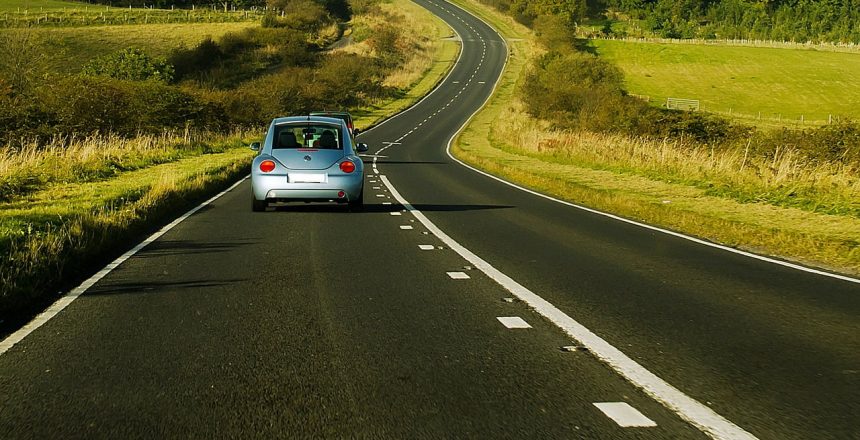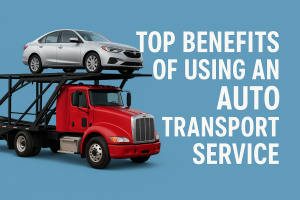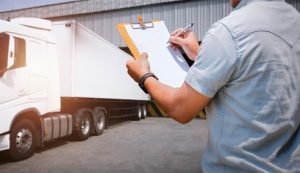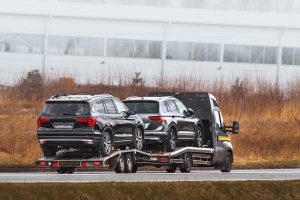Road trips can be a lot of fun. They can also create dangerous situations if you leave for a long road trip without the proper planning. Many people think that they will just figure out places to stop for the night, places to eat, and who is going to drive once they have started out on a long car ride, but this can be unwise.
There are many considerations that you should take into consideration before you embark on a long-distance drive. Make sure that you think about all of the items on this list before you climb in the car to head out on your trip, and you will have fun, be safe, and get the most out of the experience!
Table of Contents
Preparing For A Long Distance Drive
- Check fluid levels, tire pressure, and inspect your vehicle
- Map out your journey and consider alternate routes
- Get a good night’s sleep and take breaks to rest
- Buckle up, obey traffic laws, and maintain a safe distance
- Plan fuel stops strategically to avoid running out of gas
Top 17 Tips for Driving Long Distances to Keep You Safe
First of all, long-distance can mean something very different from one person to the next. For some people, driving a couple of hours is a long distance to travel. For others, traveling overnight or over multiple days counts as a long drive.
No matter what distance you are driving, always use the following list of considerations to help you to make plans. Having a plan before you leave will make any driving trip more fun, less stressful, and far safer.
- Rest Up Before You Drive a Long Distance
Driving requires attention and a well-rested brain. If you usually only commute fifteen or twenty minutes and that is the sum of your daily driving, you may not realize how fatiguing driving across the country or even a few towns away can be.
Road conditions can add to the stress of your driving hours and can strain your eyes and your patience. The bright, hot sun can make people sleepy, snow and ice can cause white-knuckle driving that wears you out, or long-straight stretches of road can lull you into a trance-like state.
Never underestimate the physical toll of sitting in the driver’s seat and watching the road. Make sure that you get plenty of sleep before you head out and always pull over and rest, or switch drivers if you are feeling sleepy. Driving tired can be just as dangerous as driving drunk and can be just as fatal. - Map Your Long-Distance Route Before Traveling
While navigation is as easy as telling your phone an address these days, there are times that this technological assistance can fail you. If your phone loses signal for too long or runs out of battery, you will lose the navigation guidance that is telling you where to go. What then?
Make sure that you have a map with you at all times. There is still nothing that beats a good map or road atlas if you need to figure out how to get somewhere. While technological advances have made mapping your trip super easy, you might still need to have a reliable paper map in a pinch.
If you are not familiar with the use of a map, take the time to learn how to use one before you leave on your trip. You may not always have someone who remembers how to use a map along for the ride, and there is no reason to get dangerously lost just because you didn’t take the time to learn to use a map before you left on your road trip. - Adjust Your Seat and Mirrors
Adjusting your seat and mirrors is a crucial step before embarking on a long-distance drive. Ensure optimal comfort and visibility by properly adjusting your seat position and adjusting all mirrors to eliminate blind spots.
This small adjustment can significantly enhance your driving experience and promote safer navigation on the road. - Use Cruise Control Wisely
Utilize cruise control judiciously during your long-distance drive. When appropriate, engage cruise control to maintain a consistent speed, reduce driver fatigue, and promote fuel efficiency.
However, remember to use it wisely and remain attentive to changing road conditions, traffic, and weather. Always be prepared to disengage cruise control if necessary for safety reasons. - Share Your Itinerary
Share your itinerary with a trusted friend or family member to ensure your safety during a long-distance drive. Before embarking on your journey, provide them with detailed information about your planned route, estimated departure and arrival times, as well as any planned stops along the way.
This way, someone will be aware of your whereabouts and can check in on you if needed. In case of an emergency or unexpected event, having someone who knows your travel plans can be immensely helpful. Share your itinerary for added peace of mind and a safer driving experience. - Plan Your Fuel Stops Along Your Long Driving Route
Despite the fact that there seem to be gas stations on every corner in your hometown, there are actually wide stretches of the US that have long gaps between towns with services. This can be especially true if you are driving a vehicle that uses diesel.
It is always a good rule of thumb to investigate the opportunities to buy fuel along your planned route before you head out. This is particularly true if you are going to be driving through the middle of the country where there are not as many cities and towns.
Once you are on the road, if your plans change, make sure to pay attention to the gas gauge and watch for road signs which warn of sections of road that will not have services for a set number of miles. While you may be able to limp for miles to a gas station, the chances are that pushing on to the next town when your car is already empty is taking a big risk that you will become stranded.
Having to walk to a gas station is a chore, and can be dangerous if you are traveling alone. Leaving your car on the side of the road can also open it up to vandalism and theft while you are gone. - Don’t Speed
We all know that speeding isn’t okay and that you can get a ticket if you speed. However, sometimes you are not trying to speed, you simply are daydreaming and you miss a speed sign along the way. After all, these roads are not known to you and it is easy to forget to check the signs going by when you switch from a highway to a small town or etc.
Pay attention to speed signs and don’t try to shave time off your drive by going way over the speed limit on the freeway. Even if there is no one around you and you think it’s safe, there are speed limits on every road to keep people safe, and that includes other drivers around you. - Don’t Drive Distracted
While listening to a podcast or some music is a fun part of a long road trip, make sure that you have set up your music or other entertainment before you head out so that you don’t feel the urge to pull out your phone and look at it all the time while you are driving.
The same rule of thumb goes for navigation tools and for other items in the car that might distract you. You cannot focus on the road if you are always looking at other screens and gadgets and you could miss the moment that a person walks out in front of you or the brake lights of the cars in front of you.
Driving distracted can result in big tickets, or serious car accidents and is simply not worth it. If you are driving with children whom you think will need extra care, make sure to bring a friend or family member along to care for them if need be.
When in doubt, pull over to attend to things going on around you in the car and only go back to driving when you can focus on the road. - Bring Water and Some Snacks for Your Long Car Ride
While it might seem like you can just stop for a meal anywhere, there are going to be times along the way that you will not be near gas stations or restaurants for miles. If you are thirsty or feeling yucky because you are hungry, you will not want to suffer for an hour or two until you find a little town.
Make sure to have some bottles of water with you when you leave. Also, pack some easy-to-access and easy-to-eat treats like cereal or protein bars or nuts and dried fruit.
Also, avoid very hot or very cold foods in the car and always have these items where you can reach them without needing to look away from the road. Snack safely and keep your energy up so that you don’t fall asleep or end up getting sick along the way to your destination.
Being hydrated can greatly affect your mental acuity, so make sure that you are not dehydrated if you want to drive safely. Being foggy mentally is a major contributor to car accidents. Staving off low blood sugar and dehydration can make your drive much safer for everyone. - Take Breaks During Your Long Drive
Sometimes you are in a good groove driving and you think that you can just push on for a few more hours without any issue. While this may be true, you are cheating your body out of the time that it needs to move around, stretch and stay active on your drive. Sitting for too long in the car can contribute to fatigue, and it can also lead to dangerous situations like blood clots or back injuries.
Make sure that you take breaks every few hours on your trip to walk around the car, relax your eyes, and step away from the road. Being able to move around contributes to mental acuity and it can also help relieve frustration if traffic has been bad or the weather has been less than ideal. - Play Word Games in the Car to Stay Alert
If you are traveling with friends, it can be helpful to play some classic word games as you drive. This social interaction makes the drive more fun, helps to pass the time, and keeps you from zoning out as you drive.
Simple games like “I Spy” or the license plate game can keep you on your toes and help you to avoid sleepy driving. These games are also really fun and can ease any tension that might be building between kids in the car, or occupants that are sharing small spaces in the backseat. - Plan Sights You Want to See On Your Long-Distance Driving Route
Road trips can get really tedious if all you see is the freeway the whole time. It is really fun to plan to see things along the way as you drive and these stops are good for your body as far as stretching and taking a mental break.
Before you leave, make a list of places that you want to see and plan your route around visiting a few of them. Even stopping to see silly things like “The World’s Biggest Tee-Pee” can be really fun and create a great photo opp.
Use these breaks to walk around, take some deep breaths and take some pictures. You can even use these sightseeing visits as your overnight stops, giving you more time to see additional items or take tours. Many people who are driving across the country will make sure to stop near the Grand Canyon, for example. - Make a Budget For a Long Commute
There is no better tool to plan a long road trip than a budget. It can be helpful to alleviate stress through the planning of costs. Part of budgeting should include possible hotel costs, fuel costs, sightseeing fees, and food costs.
Always estimate high just in case your intended hotel doesn’t work out and you need another hundred dollars to cover your room at the only other hotel in town.
There are always variables related to travel and you should never budget to precisely the amount that you hope to spend. Budget high and then be pleasantly surprised when you save money along the way.
Budgeting can also help you to sort out what you really want to spend money on as far as sightseeing and other extras. If you have room in the budget for a splurge at the end of the trip, you can choose to go for it!
But splurging early and then coming up short in the middle of your trip is often very disheartening, or could lead to a real issue for you financially. - Verify That Your Insurance is up to Date
While this might seem like a no-brainer, it can actually be really easy to forget to renew your car insurance. This can cause a major snag if you are pulled over along the way, or if you suddenly need to use your insurance for a car accident or a rental car.
Make sure that your car insurance is set to the right coverage limits and that it is going to be in place for the duration of your trip. There are many uses for car insurance when you are traveling, from rental car insurance extensions to claims made for car break-ins, so you are going to be cheating yourself out of support that could come in handy during your drive if you don’t check on this factor. - Be Prepared for Possible Road Conditions
Check out your route before you leave. Also, make sure that you have chains with you if you will need to traverse snow along the way. Even if you think that the roads will be clear for your whole trip, make sure to check the weather frequently.
There is no reason to take unnecessary risks along your route. Therefore, checking the weather can save you from driving into dangerous conditions when other routes are open to you. Always have a few other routes in mind if you need to go over some mountains. This is because bad weather can close these routes down and strand you for a few days.
If you are not good at driving in snow or ice, plan accordingly to make your drive safe for everyone around you, as well as you and your passengers. - Watch Signs for Wildlife
Many of us don’t pay much attention to the signs on our daily drive that indicate deer or elk crossings etc. This is because we know the area we live in and can assess the conditions of the road based on prior experience.
When you are driving in places that you have never been to before, you will not have this insider information guiding your drive and you should always trust the signs. Large animals crossing the road can be significant hazards for cars. Also, don’t get into a bad accident because you assumed that there would not be an elk on the road.
Furthermore, look into the tree line or the brush at the side of the road as you drive. This is so that you can see deer or other wildlife well before they enter the roadway. - Moving? You Can Ship Your Car and Avoid Driving a Long Distance
If you are going to be leaving on a long road trip and have multiple cars but not multiple drivers, you can hire someone to take your car to your new home for you!
Choosing an auto transport company to ship your car is an important decision and you want to be sure that you do your research before making it. Get quotes or bids from at least a few companies. Also, make sure that you check on their insurance and their ratings and reviews.
You will also want to make sure that you ask what kind of transport they are going to be doing. Exotic or antique cars should always be hauled in an enclosed car trailer, and large vehicles like vans and trucks may only be able to be hauled on certain kinds of open trucks. You will want to know all of these details before you say yes.
You will likely not follow the same route as your car that is being shipped for you. Thus, make sure that you know how long it will take for your car to arrive. You would not want your car to be delivered before you get to your new home!
Let Us Handle Your Auto Transport Needs
Mercury Auto Transport is an auto transport broker that presents offers from FMCSA (Federal Motor Carrier and Safety Administration) licensed and insured carriers. We have access to a wide range of car transporters through National Dispatch Boards, and together with you, we can often strategize and negotiate far better rates.
Get a free quote today or speak with one of our professional auto transport representatives and experience seamless and reliable auto transport services.
7 Physical Effects of Long Distance Driving
Fatigue: Extended hours of driving can lead to fatigue, especially if proper breaks and rest are not taken.
Fatigue can impair concentration, reaction time, and decision-making abilities, increasing the risk of accidents.
Muscle stiffness and discomfort: Sitting in the same position for long periods can cause muscle stiffness, particularly in the lower back, neck, and legs.
This can result in discomfort, aches, and even cramps.
Eye strain: Focusing on the road for an extended duration can strain the eyes, leading to dryness, itching, and fatigue.
Staring at a fixed point, such as the road ahead, can also contribute to eye strain.
Poor circulation: Sitting for long periods can impede blood circulation, especially in the legs. This can cause swelling, numbness, or a tingling sensation.
It may also increase the risk of blood clots, particularly in individuals with pre-existing conditions or who are at higher risk.
Dehydration: Drivers may forget to drink an adequate amount of water during long drives, leading to dehydration.
This can result in fatigue, dizziness, and reduced cognitive function.
Increased stress levels: Long drives can be mentally and emotionally draining, leading to increased stress levels.
Factors such as traffic congestion, unfamiliar roads, or tight schedules can contribute to elevated stress levels, which can have negative effects on overall well-being.
Posture-related issues: Poor posture during long-distance driving can lead to postural discomfort and increase the risk of musculoskeletal problems.
Slouching, hunching over the steering wheel, or sitting in an uncomfortable position can strain the back, neck, and shoulders.
To mitigate these physical effects, it’s important to take proactive measures outlined in our tips above.
How To Drive Long Distance in Hot Weather
- Ensure your vehicle’s cooling system is in good working condition before driving in hot weather.
- Stay hydrated by bringing plenty of water and non-alcoholic beverages.
- Protect yourself from the sun’s rays with sunglasses, a hat, and sunscreen.
- Set your vehicle’s air conditioning to a comfortable temperature and use window shades to minimize direct sunlight.
- Park in shaded areas to prevent heat buildup in your vehicle or use windshield shades if shade is not available.
- Plan your driving schedule to avoid the peak heat hours of 11 a.m. to 4 p.m.
- Wear loose, breathable clothing in lighter colors to stay comfortable.
- Take regular breaks every two hours to rest and cool down.
- Be mindful of signs of fatigue and stay alert by playing energizing music or engaging in conversation.
- Stay updated on weather conditions and adjust your plans accordingly, while being aware of emergency procedures if needed.
How To Drive Long Distance in Cold Weather
- Prepare your vehicle by checking the battery, antifreeze levels, and tire conditions.
- Dress in layers and wear warm clothing to stay comfortable during the drive.
- Clear all snow and ice from your vehicle before starting your journey for optimal visibility.
- Keep an emergency kit in your vehicle that includes items like blankets, a flashlight, and extra warm clothing.
- Drive cautiously and at reduced speeds, allowing for increased stopping distances on icy or snowy roads.
- Keep your fuel tank at least half full to prevent fuel line freezing.
- Use winter tires or tire chains for improved traction on slippery surfaces.
- Increase the following distance between your vehicle and the one in front of you to account for longer braking distances.
- Be aware of black ice, which can be difficult to spot but is highly slippery, and adjust your driving accordingly.
- Stay updated on weather forecasts and road conditions, and consider postponing your trip if conditions are extremely hazardous.
Driving Long Distance With An Elderly
When driving long distance with an elderly person, it’s important to consider their specific needs and ensure their comfort and safety.
Plan for frequent breaks to allow them to stretch, use restrooms, and remain refreshed. Make sure the vehicle is equipped with any necessary assistive devices or accommodations, such as cushions or seatbelt extenders, to provide maximum comfort throughout the journey.
Additionally, maintain open communication with the elderly person, be attentive to their needs, and be prepared to adjust the driving plans as needed to prioritize their well-being.
Driving Long Distance With Kids
When driving long distance with kids, it’s essential to prioritize their safety and keep them comfortable throughout the journey.
Prepare entertainment options such as books, games, or tablets to keep them engaged and avoid boredom.
Plan regular breaks to allow them to stretch, use restrooms, and release some energy, while also ensuring they are properly secured in age-appropriate car seats or seat belts at all times.
Travel Smart, Travel Safe When Driving Long Distances
Road trips can be very fun and very low stress with a little planning. If you are moving, shipping the car that you are not going to drive out to your new home can also save you a lot of hassle and heartache along the way.
Planning your long road trip in advance will open up the chance to have fun along the way. It’ll also create a memorable drive that you will look back on with fondness for years to come.
Frequently Asked Questions About Long Distance Driving
Do long road trips damage your car?
Long road trips can put additional wear and tear on your car, so regular maintenance and periodic checks are important to minimize potential damage.
What is the best day to drive long distance?
Generally, weekdays, especially midweek, tend to have lighter traffic compared to weekends, making them preferable for long-distance driving.
When driving long distance, how often should you stop?
It is recommended to take a break every two hours or every 100 miles to combat driver fatigue and maintain focus.
What are the safest times of day to drive?
The safest times of day to drive are typically during daylight hours when visibility is high and fatigue levels tend to be lower compared to nighttime driving.
What is the safest number of hours to drive?
While it can vary based on personal factors and individual tolerance, it is generally advisable to limit continuous driving to no more than 8-10 hours per day.
How often should you look in your rear view mirror?
Frequent and consistent checks of your rearview mirror should be done every 5-8 seconds to stay aware of the traffic behind you and anticipate any potential hazards.






